Home » Cultural Understandings
Category Archives: Cultural Understandings
Tour virtuale: “Il silenzio di Roma”
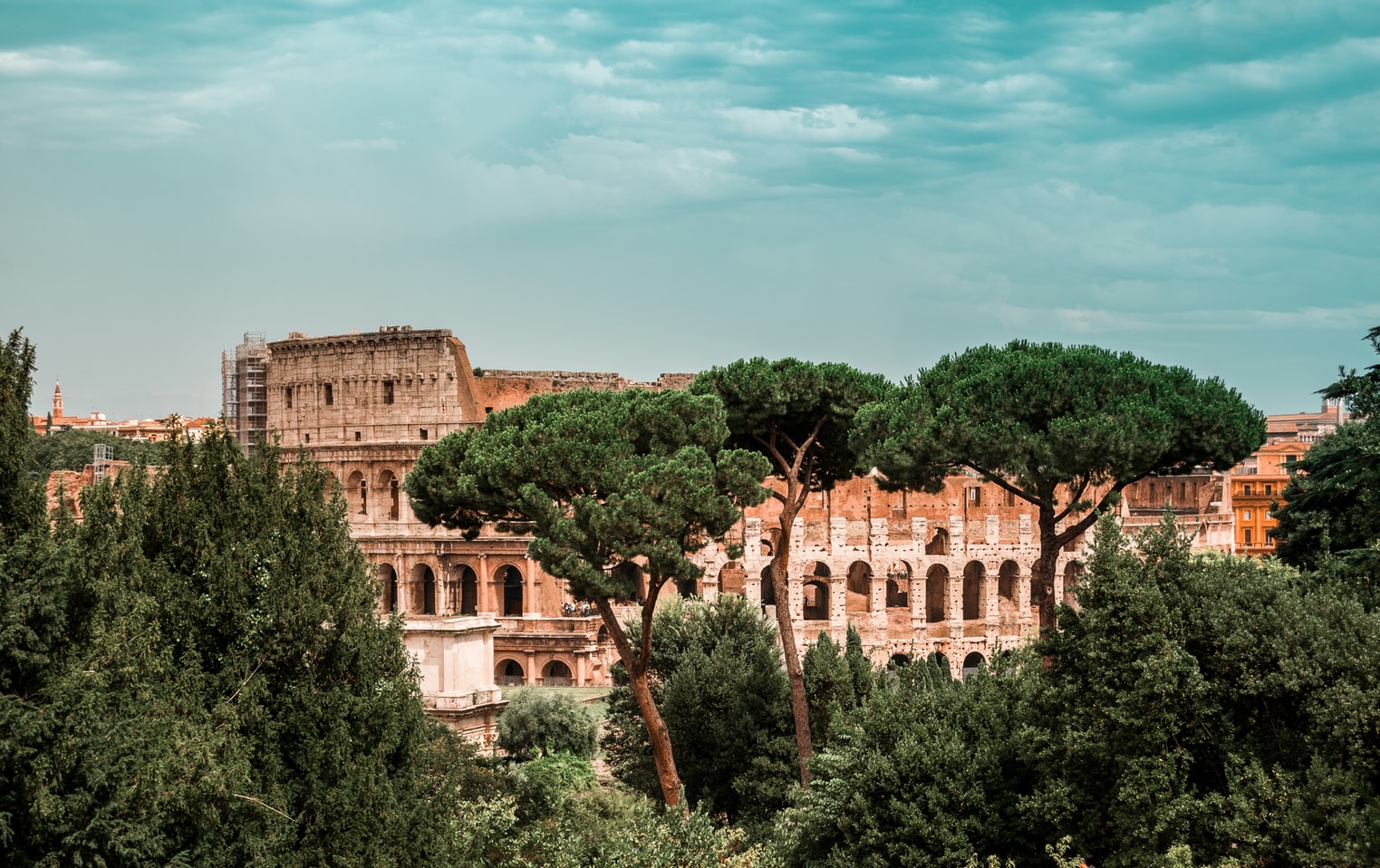
Manhattan is known to the world as the city that never sleeps, but it’s not the only city that is notorious for its seemingly nonstop lively atmosphere. There is perhaps no city more iconic than Rome, and it’s been that way for thousands of years for a reason. It is the cradle of Western society, so such a beautiful city shrouded in silence during the 2020 April lockdown was horribly eerie.
Even the statues, in their towering stone glory, looked sad.
And when you consider the reality of COVID-19 in Italy while embarking on this silent virtual tour, it’s hard to feel the city’s usual majesty. The silence, and the stillness, was a mark of death and fear in the Eternal City. As one of the first European countries hit by the virus before there were vaccines and widespread mandates that handled the spread, Italy was devastated.
With hospitals overrun, families with victims of the virus were forced to house their decaying corpses in the tight quarters of their apartments while waiting for transport, sometimes for days at a time. Under then-Prime Minister Giuseppe Conte, the country was categorized into color-coded zones: rosso, aracione, and gialla (red, orange, and yellow). Red was the high-risk zone, and at one point in 2020, nearly the entire peninsula was a bright, glaring red. If you had to venture into the piazza for groceries or supplies, you had to fill out a form to present if stopped by polizia.
This scene was that of a dystopia, not the Eternal City.
During an interview with NBC News at the height of the pandemic, Conte told viewers that “We are suffering very much.” Later, it would be under his strict restrictions managed to get the country’s numbers under control.
Today, although the Green Pass has sparked widespread protests in Italy and abroad, current Prime Minister Mario Draghi has deemed vaccine mandates crucial for stopping the spread of the virus and eventually seeing the population reach herd immunity.
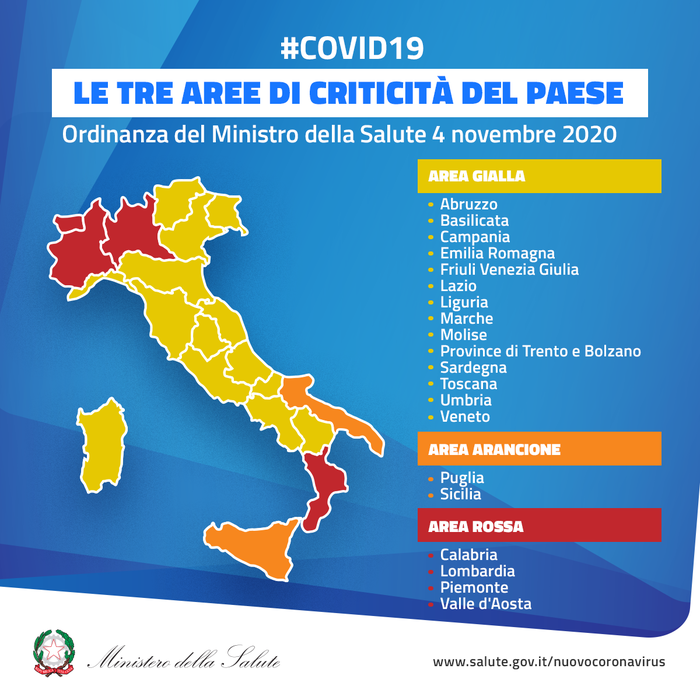
Which marks a much better state of mind than what reigned in the bleak, empty streets of the Italian capital in the virtual tour.
When you think of the Piazza Navona or the Spanish Steps, the iconic images are always riddled with tourists. Sometimes, there are too many tourists, but at least that means there are people. Where there are people, there’s business. Money spent and made. Throngs of khaki-wearing Americans snapping photos of the Trevi Fountain or the Pantheon is a good thing, which even Italians can attest to. Their absence wounded the city’s economy, much of which relies on tourism (until the pandemic decimated its tourism numbers).
These monuments and their surrounding streets usually bustle with the hum of scooters and the blare of car horns. Without the noise, the people, and the activity that makes this city so great, it seemed like nothing but hollow stone and marble. Occasionally there was an ambulance racing down a road, but that’s not the kind of noise you want. It only underscores the suffering that Italy experienced in April 2020, and although the virtual tour is worth viewing, it’s not worth repeating.
Rome in the video is not the city that the rest of the world knows and loves.
However, that does not mean that it can’t be used for global collaboration in an educational setting. If one wants to teach students the reality of what happened to the world in 2020 through hands-on projects and other tools, this tour certainly provides a raw view. If the home of the Colosseum and the Roman Forum went silent, students of the future will realize just what a dark period of history this was.
Particularly when we are back to some semblance of normalcy, and COVID-19 is nothing but a memory that makes you say, “Jeez, do you remember that?”
Hopefully, we will reach that point soon.
So here’s to ending 2021 and starting 2022 with a bang. Hopefully, Rome (and the rest of the world) will be back better than ever before. It’s a cheesy cliche to say, but what doesn’t kill you makes you stronger, and that’s never been more true for the people of Italy in the last few years.
Out of Eden & Into the Classroom
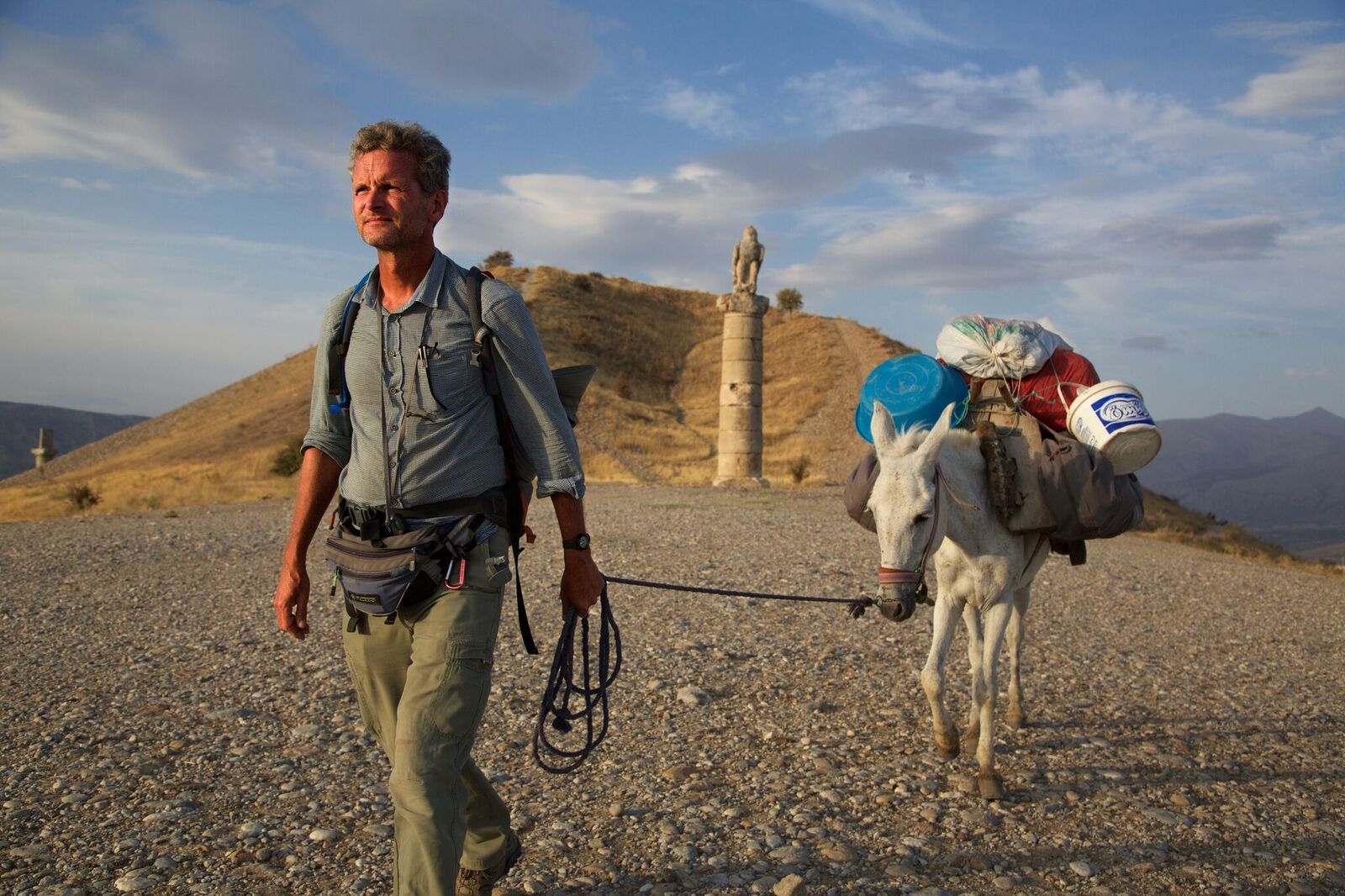
Before visiting this website, I had never heard of the Out of Eden Walk, and I am honestly surprised considering how much of a feat this is. A modern day Odysseus, Paul Salopek is currently on a 24,000-mile odyssey from Africa to the southern tip of South America. It is special because he is following the path our ancestors made as they migrated across the Earth. Along the way he is covering the major stories he encounters from the eyes of the people I didn’t even know existed. From climate change to technological innovation, from mass migration to cultural survival, Salopek is giving voice to the people who inhabit the places he is journeying through every day.
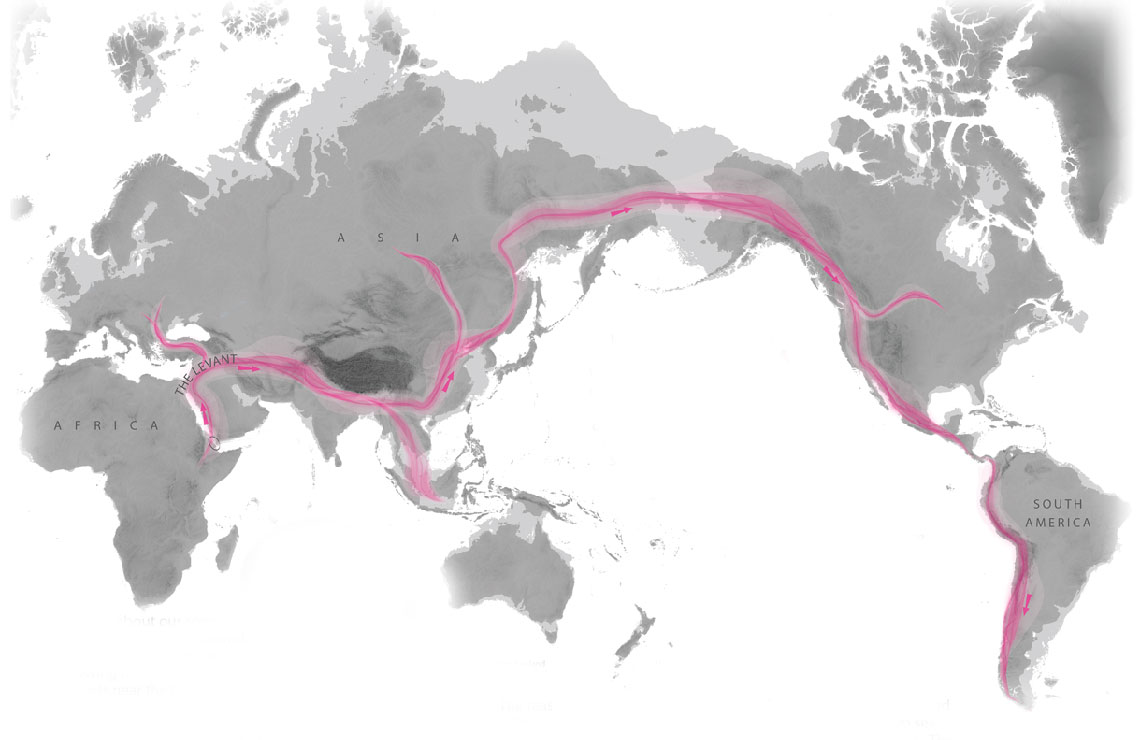
Walking for several years now, Salopek has obviously been to many places. Alongside gaining popularity for this odyssey, he has also inspired educators across the world to teach globally. As a future teacher, I am going to have the task of teaching students about the world ahead of them, and that means more than just learning about their city, state, or even country- it is about teaching that the world is way larger and has so much more to offer than what is on TV or in the news. So much of today’s society is based upon quickness and cheapness, rather than time and quality. Paul Salopek can simply visit big named places in each of the countries he visits and be done in a few months. Instead, he is emphasizing the slowness of it, which really brings meaning to his work and allows for those genuine human interactions. In this blog post, I am going to talk about a few of the place’s Paul has been to.
The first stop for us is the most recent one for Paul: The Gaoligong Mountains, in Yunnan, China.
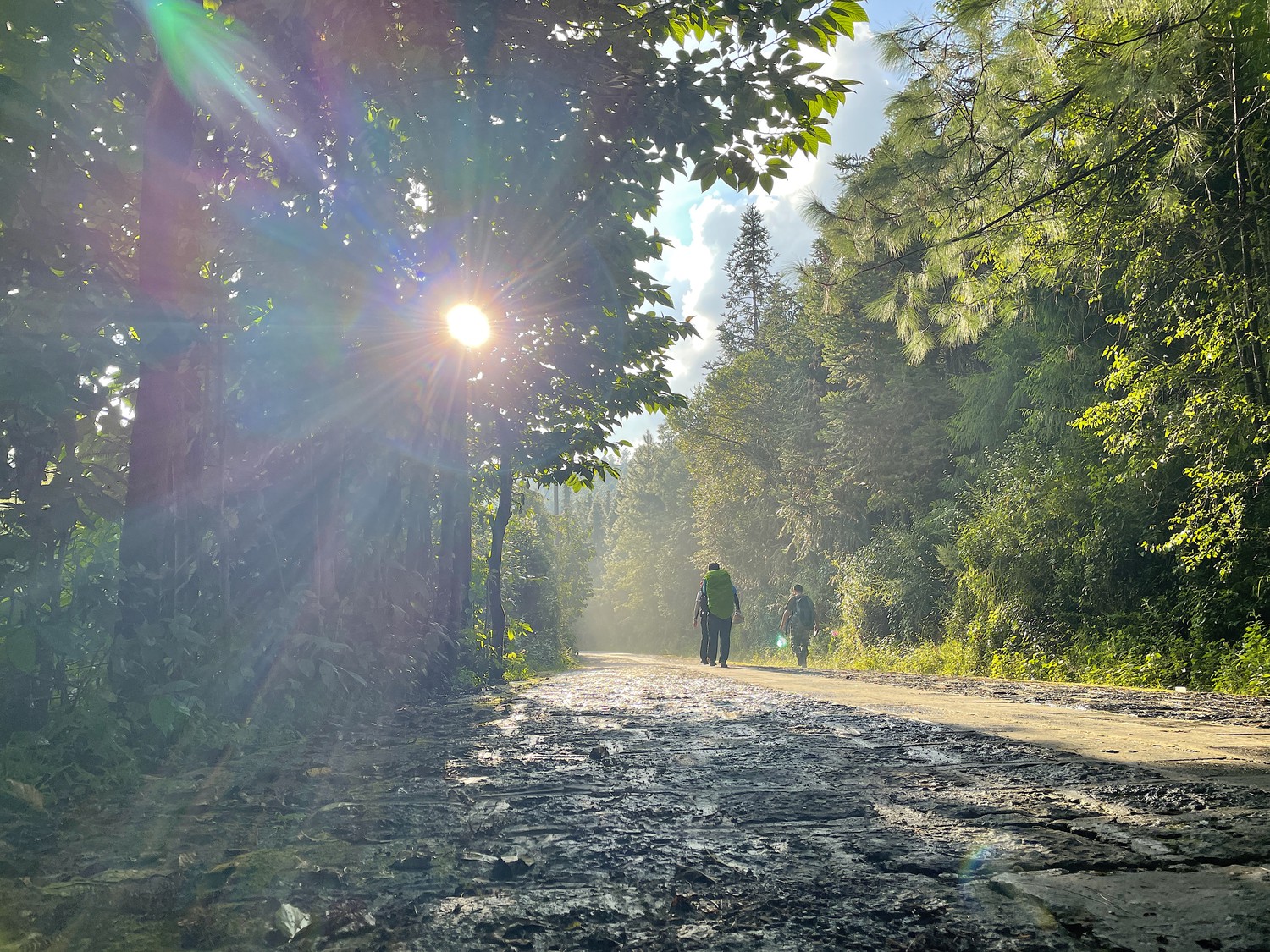
According to Salopek, around 5,000 species of plants, around 700 species of animals, and 1,690 different insects find refuge in the mountain range. One of his guides says the forest floor was so covered with salamanders, the only way he could leave the forest was by walking through creeks. These places are untouched by technology and because of that are often overlooked. That is no problem for those who inhabit areas near the mountain range, in fact, they prefer it. An administrator of the mountain range spoke with Paul and explained there is a saying that goes, “You cut my trees? I cut your hands”. They are very passionate people and have the utmost respect for nature, something that we should all learn from and admire. Yang Xue Liu is a 74 year old man Paul encounters in a village in the mountain range. He sells medicinal herbs and each one has its own purpose. He explains that if people knew plants, they would use them and that is something very important in a science classroom. A teacher could give a whole lesson on plants or nuts that are safe to eat, which can help students learn how to use the environment around them and not always rely on processed food.
The next stop is a step back into time for Paul, but a new future for me and those alike who have no idea a place, named Baku, Azerbaijan, exists.
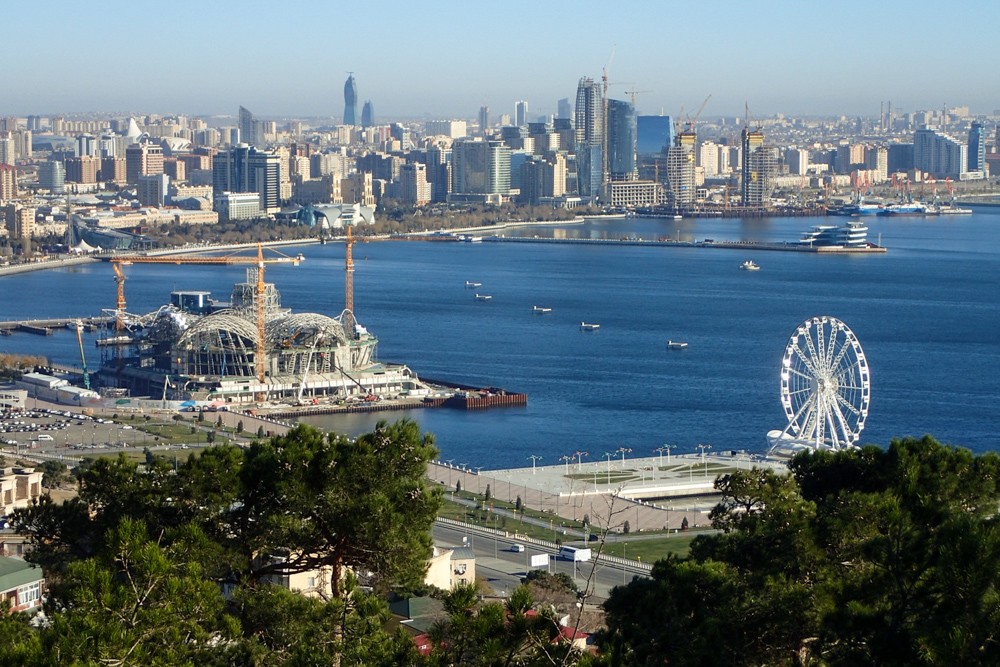
Baku is home to many different empirical influences, from Russian to Persian, Ottoman (Turkish), and even British. It is also home to apparently the world’s largest KFC: a fact I did not ask for, yet did not know I needed to hear. This city has a reputation for taking in widely different influencers and somehow manages to create its own spin on it. This kind of city would be great for a social studies or history class, as it is proof that we live with history everyday. Paul links a walking tour of the city that I think greatly shows the user just how diverse and culturally rich this city is.
Continuing with the theme of being unexpected, the last stop in this blog is where Paul Salopek started, Herto Bouri, Ethiopia. It is interesting to read what expectations he had for his journey, and how excited he was. Salopek in 2013 predicted to be in South America by 2020 and it is crazy to think about how much of the future is unknown especially writing this blog in 2021 dealing with the Covid-19 pandemic. His journey beginning reminds me of beginning school for the first time as a 6 year old. Like Paul, I had no idea of the journey I was in for, and I still do not now. Just as my parents and other adults have done before me, I walked through school everyday, enjoying the ride and discovering new things about myself and others. Now, on the cusp of ending my school career as a student, I begin a new walk in school, as a teacher. Like the guides that help Paul on his journey, I too am now a guide for the students who are now where I once was. Keeping him and his journey in my thoughts, I will use this Walk of Eden as a teaching point about the globe, but also one about ourselves. A quote by a fifth grader in the U.S.A. about the Out of Eden project really sums up the importance of this project: “I think when exposed to the details of others’ lives, you start noticing your own…”—Annie 5th grade student, Massachusetts, USA.
Out of Eden Walk Discoveries
![[Image description: A temple in Myanmar.] Via Unsplash](https://blogs.stockton.edu/webtools/files/2021/11/mg-cthu-1h_NN3nqzI-unsplash.jpg)
Today’s news and politics is riddled with stories about China, conspiracies, rumors, and scandals that the media argues about until they’re blue. So when Crossroad of Memory, a walk that was halted due to the pandemic, was featured on the Out of Eden Walk, my attention was immediately snagged. Photographer Paul Salopek had to halt his multi-year, 24,000-mile walk because of the pandemic. After spending quarantine overlooking the skyscrapers of Shanghai, Salopek “restarted” his journey in Yusan, a subtropical town nestled near the Myanmar border. Yusan is full of modern buildings with red-tiled roofs and, like most towns in Chinese provinces, is rich with history as old as the Ming Dynasty. Salopek even says that it’s likely that Marco Polo walked through this town. Ancient history is something that Salopek trails in his worldwide walk, and he is sure to keep nomads, hunter-gatherers, and cavemen in the back of his mind as he tracks the roads, villages, and landscapes that humans from thousands of years ago once trekked. Like most Asian countries, the legacy of their ancient past remains today, even in modern cities like Shanghai or Seoul. These legacies are something that Salopek captures in his photography, like when he met Kong Zhong, who showed him a genealogy tree as long as a Persian rug that traces his heritage back to Confucius himself. Being linked to the ancient world is an understatement, and it’s a point of pride and culture for the people of China.

Another leg of Salopek’s journey was aboard the cargo ship MV Alios, which was sailing through the Mediterranean Sea between Cyprus and Israel. This was Milestone 20, from Chapter 3’s Autumn Wars, which marked his trek from Asia and the Middle East to Cyprus. Perhaps no part of his journey felt more isolating, as aboard the ship he did not encounter another human (other than the crew), especially while hunkered down in his tiny cabin room. Upon arrival in Cyprus, Salopek traversed through Treasure Island. As Cyprus is one of the oldest inhabited islands in the world, it is hard to ignore the connection between this new destination and the ones throughout Asia; the legacy of a past living, an old way of life, still remains. On Treasure Island, where the scorching Mediteranean heat is unbearable, people walk around topless, wearing nothing but shorts or bathing suit bottoms. For Salopek, this only reminded him of our primitiveness, and how in a way humans are not made to be surrounded by machinery in a capitalist society. Salopek perfectly captures this feeling with:
“We are Stone Age people trapped inside Toyota pickup trucks.”
-Paul Salopek, National Geographic
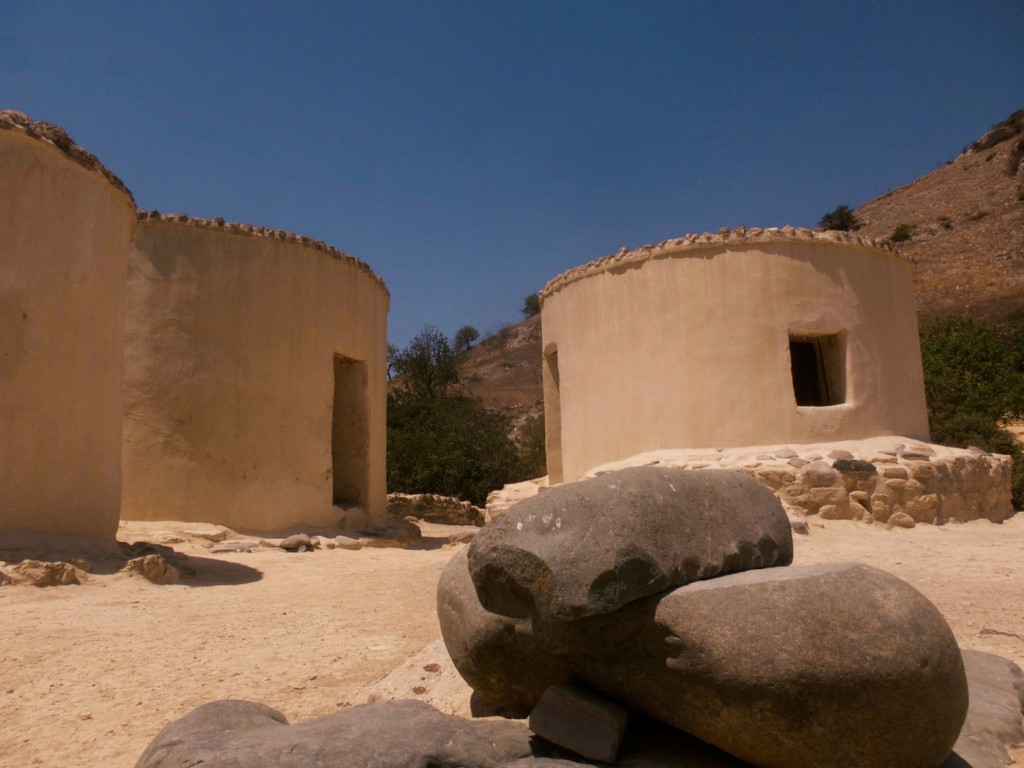
The heat is something that humans have been enduring for thousands of years, which seems to be common knowledge especially with the fact that 12,000 years ago, Cyprus was populated by hunter-gatherers who used the land and its extreme elements to their advantage for survival. This is perhaps symbolized by the gnarled, 700-year old olive tree that Salopek is taken to. The tree has provided sustenance for people for centuries, and although weathered and grooved with age, it still remains. Much like the legacy of Cyprus’ past itself.
Also from Autumn Wars is Tarsus, Turkey, the hometown of St. Paul, who brought pilgrims from Italy to worship and whose legacy resides in a renovated church where the pilgrims themselves once prayed. Obviously, this links the people to their past, but there is also modernity in this old land: there is a cafe called St Paul’s Cafe, an establishment that directly links modern society with its history. This part of Salopek’s journey is aptly named Apostle, which represents the area’s religious foundations.
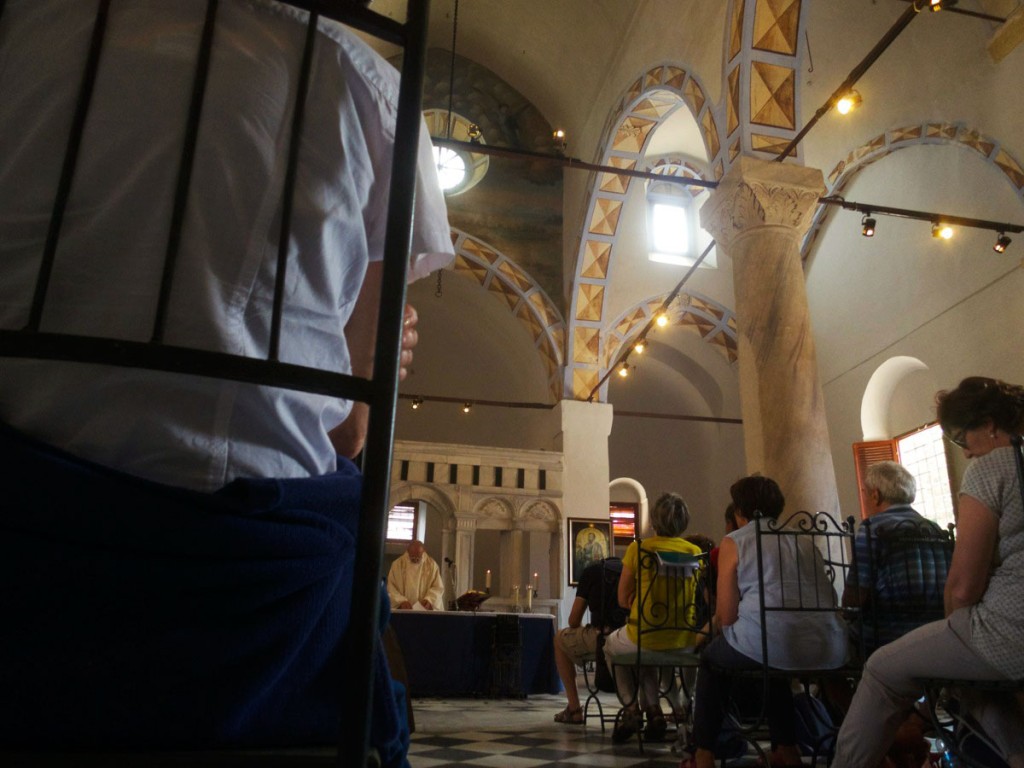
Tarsus’ history goes father then St. Paul, however. Notably, it is home to where Cleopatra first met Marc Antony. The town’s connection to Rome and one of its most notorious couples is in the ruins of a temple that once boasted columns six stories high. With the Roman Empire being the Roman Empire, something tells me that this temple wouldn’t be anything less than what its enormous structure once was. Although all that remains is its rubble, and the people no longer care about the history according to Erkul (a guide who showed Salopek around), the legacy remains no matter who is interested in it or not. The very ruggedness of these ancient locations, craggy with age, sun, and dust, reminds you of the past no matter where you look. The way Salopek connects to today’s people in these locations, and listens to their truths about their histories and cultures, is an effective way of linking today with the past, and underscoring the importance of remembering where we came from no matter what economical, political, or cultural changes may be roiling in the modern age.
What I explored on my Out of Eden Walk
According to the National Geographic, Out of Eden Walk is a 24,000-mile odyssey, decade-long experiment conducted by Paul Salopek. We as readers learn that, “[He] is walking the pathways of the first humans who migrated out of Africa in the Stone Age and made the Earth… [and] is covering the major stories of our time—from climate change to technological innovation, from mass migration to cultural survival” Click HERE to find out more. Paul documents and uploads photographs, videos, audio, etc. and records,” human life at the start of a new millennium as told by villagers, nomads, traders, farmers, soldiers, and artists who rarely make the news.” Click HERE to read more.
I explored the “Children’s Crusade” article focused on the Shilo Settlement in West Bank. In this article, we learn about Paul’s encounter with an Israeli settler named Marc Prowisor who takes him to a Palestinian farmer named Khaled Daraghmeh. Below are two images of the men.


The article states that the “American-born Jew, Prowisor is the security director for the One Israel Fund, an organization that provides logistical assistance to Israeli settlements occupying the West Bank. I have paused the walk at Shilo because I wished to visit these controversial outposts, to meet an Israeli settler. Prowisor’s community, and others, is trying to evict Daraghmeh from the land he farms, claiming he is a squatter. Daraghmeh says the hay-colored fields have been in his family for a century. This dispute is years old. The two men are categorical enemies”. (Salopek, National Geographic Society, 2014)
As reader we learn that there is a lot of conflict more than ever before between the Israeli and Palestinian youth.
I explored the Jeddah, Saudi Arabia walk, a total distance of 63 miles (101 KM). Click HERE to find out more.
During the walk they stubble upon a gardener:


Image by: PAUL SALOPEK

Click HERE to read more.
I also explored Tbilisi, Georgia in the Walking Tbilisi article. It is said that Tbilisi has kaleidoscope history of invasion and reconquest.

They are having a meal in Jerusalem. I found this image interesting because of the star of David and the Jewish words.
Here is an image of the inside of the Sioni Church

“The cross of St. Nino is locked behind glass. Her cross is made of two grapevines, lashed with her own hair”
Click HERE to view more images of Tbilisi, Georgia.
Thanks for reading! Good Luck to Paul Salopek on this journey! His global walk resumes in Yunnan, China after being halted by the global pandemic. Click HERE to read about where he is walking now.
WE Can Change the World
When people have ideas to make the world a better place, most of the time if they are not wealthy or have a position of power, their idea never takes off the ground. That all changed with WE, an international charity that empowers people to make the world a better place. So far some of their accomplishments include giving over 1 million people access to clean water and sanitation, 200 thousand children education, and over 14 million dollars fundraised by students supporting local and global issues.

One of the main focuses of WE is in the educational field, specifically supporting teachers with free resources to help empower their students. They have multiple modules that teachers can access through their WE Schools website, which allows anyone to sign up and use their resources with no cost. Thye partner with OneNote, a popular note taking program that I showcased during this screencast. Below is an image of the introductory page to WE Schools, which outlines their mission as well as the features they have.
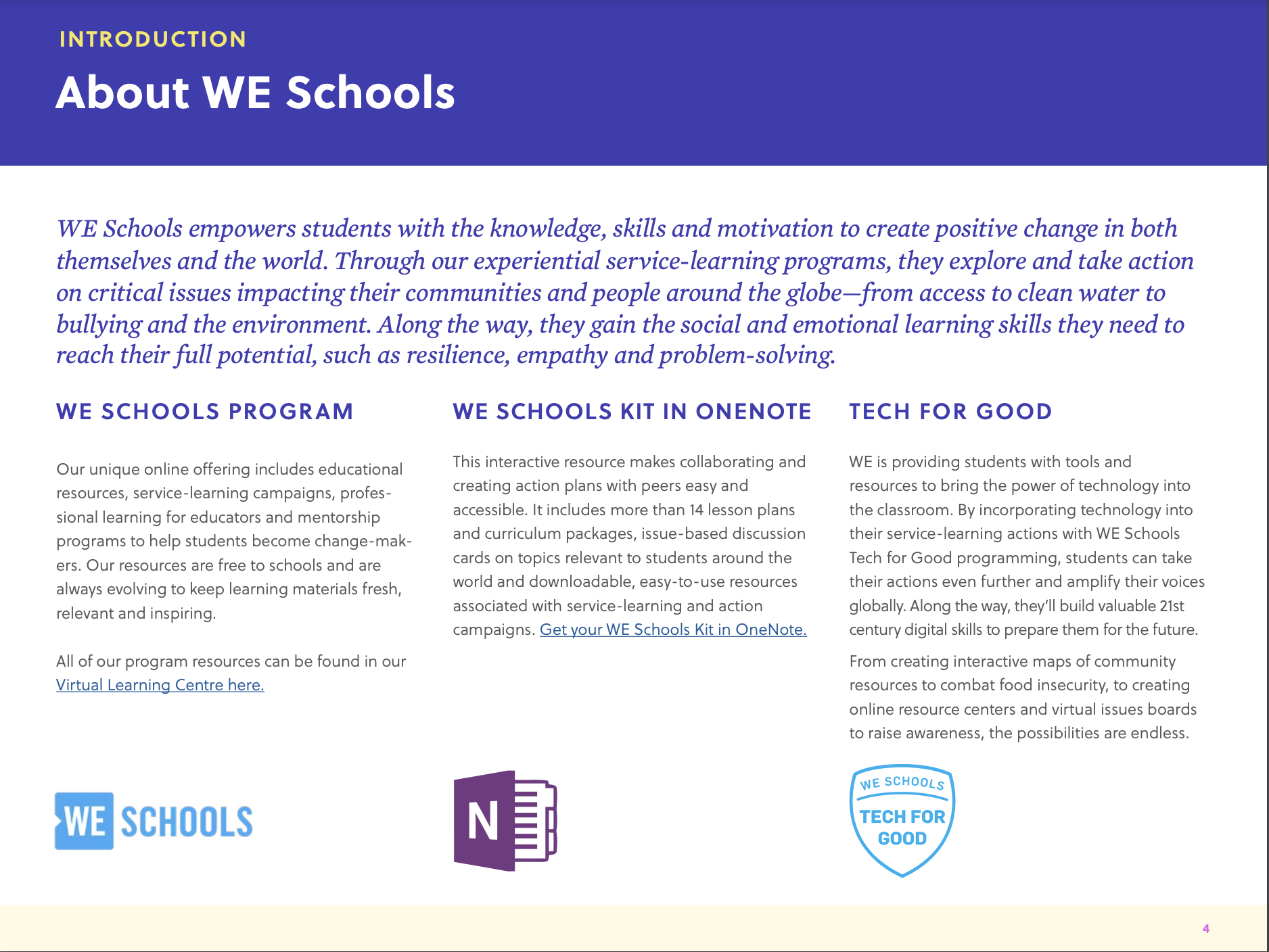
The tool that stuck out to me was the WE Schools Foundational Module, which helps teaches foster a safe and inclusive classroom. Educators talk a lot about how important it is the be inclusive and the benefits of it but sometimes fail to give actual strategies. This module gives tips on how to be supportive, as well as 5 lessons on how to create a caring classroom. For teachers who may struggle with coming up with ideas, this module is the perfect starting point to change their classroom for the better. On the other hand, for teachers who may have become indifferent of students or fail to make changes in their classroom, this module can help them come to understand the importance of inclusion and how WE is helping ensure its success.
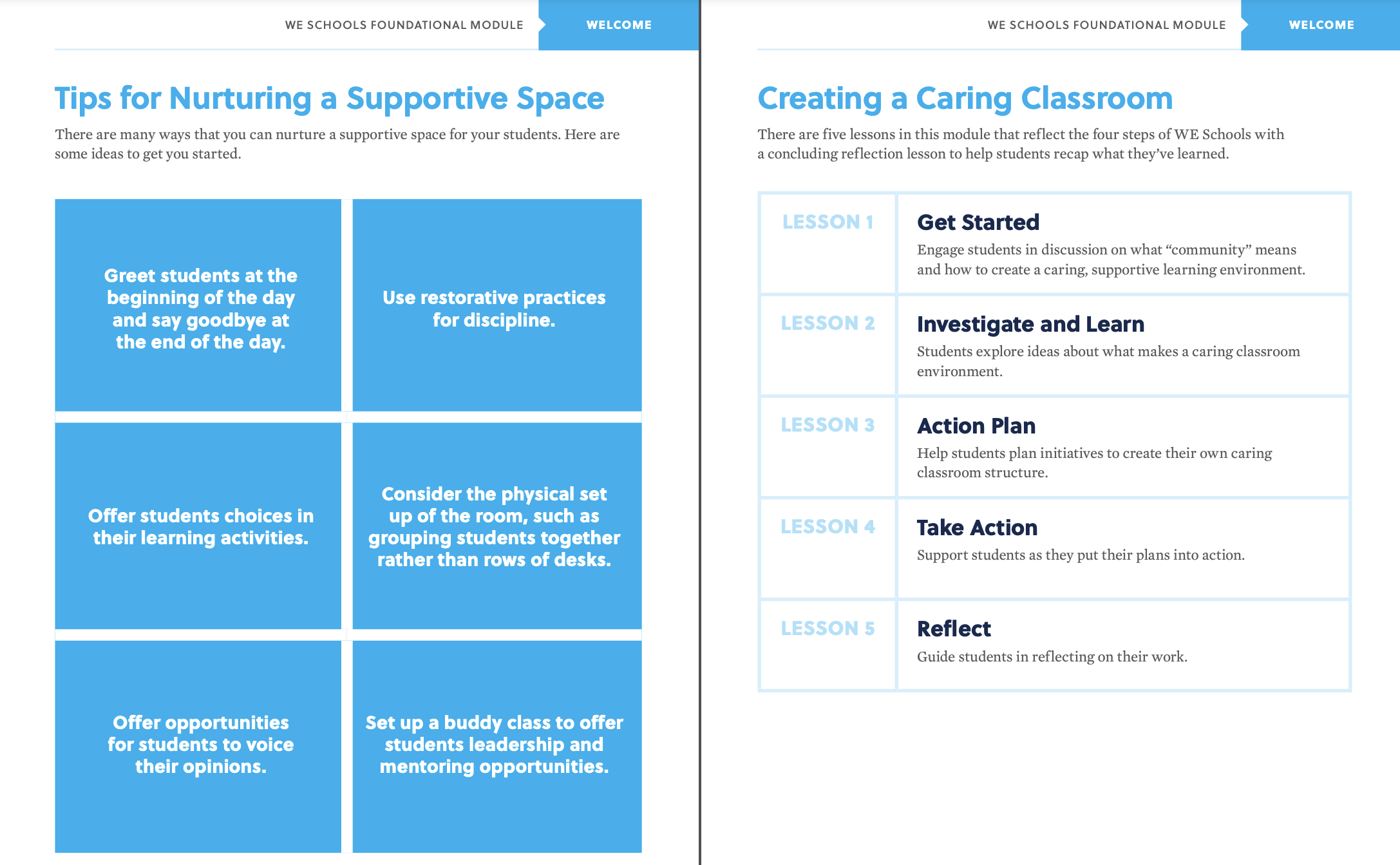
The WE Charity exists to only help make the world a better place and students in our schools are the future benefactors and contributors to it. As a teacher, it is our responsibility to help foster inclusion in our classrooms; the foundational module is where it starts.
Roma: La città di magico eternità
![[Image description: Rome's Trevi Fountain.] Via Unsplash.](https://blogs.stockton.edu/webtools/files/2021/11/photo-1525874684015-58379d421a52.jpeg)
Is there a city in the world more iconic than Rome, Italy? Society was practically built on Rome, which housed an empire that influenced the Western World for centuries to come. For my virtual tour, choosing Italy was a no-brainer, but I didn’t feel like a tourist for immediately leaning toward this iconic tourist city.
I am not going to focus on the Colosseum, because that’s just too touristy. So I started on Capitoline Hill, which was one of Rome’s original 7 hills. It was here that Rome’s first mint was created in The Temple of Juno Moneta (today’s Church of Santa Maria in Aracoeli). The hill became the seat of the city’s government in the year 1,000, which was also where the Senate Building and the Tabularium (Rome’s archives) stood.
Another iconic image in the Eternal City is the Spanish Steps, located in Piazza di Spagna. Thanks to its Baroque architecture that hosts the famous Barcaccia Fountain, tourists throng here every year (except for during COVID in 2020, of course).
The steps go to the Trinita Church, another Baroque marvel commissioned by Pope Innocent XII who had Francesco De Sanctis build it in the 18th century.

Perhaps nothing is more formidable than the Castel Sant’Angelo, the towering papel fortress that towers in the elegant neighborhood of Prati. This mighty structure is the guardian of the Tiber River, towering over its flowing waters for thousands of years. In 123 AD, Emperor Hadrian built the fortress as a tomb for himself and his family, and throughout the ages, it was used as an imperial mausoleum for Roman emperors until the Middle Ages when it became a fortress to protect the city. Despite this iconic stone structure’s many uses, it’s fair to say that no matter what time period it was, it symbolizes Rome’s imperial power and solidifies the city’s place as an iconic world heritage site.
The best part about taking a virtual field trip in such an iconic city is being able to learn about the history behind such imposing monuments. The Capitoline Hill was where such important politics occured throughout the empire’s history, and Castel Sant’Angelo’s 2,000+ existence over the Tiber River is a perfect symbol of the city’s significance.
Rome’s history spans centuries, but what makes it unique is its fascinating combination of ancient paganism and Old World Catholicism everywhere you look. The very cobblestones lining the piazze breathe history, whether it be ancient or from the modern era. It isn’t called the Eternal City for nothing.
Virtual Tour of the Smithsonian National Museum of Natural History
I took a virtual field trip to the Smithsonian National Museum of Natural History which is located in Washington, D.C., United States. Earlier this year I visited this museum but today I wanted to take the virtual tour online. On the website it gave me the opportunity to view the permanent, current or past exhibits. The virtual tour that I chose had pictures of a past exhibit that were displayed prior to when I had made my visit. This virtual tour gave me a different perspective and I found it more interesting because I was able to zoom in and out of exhibits. Usually in person its crowded and you don’t really look at it for too long but viewing it online its gives you more of a connection because you can look at it for however much time you need.
I like learning about Natural History so as I was scrolling through the different displays I came across the Iceland display so I had to virtually visit it!
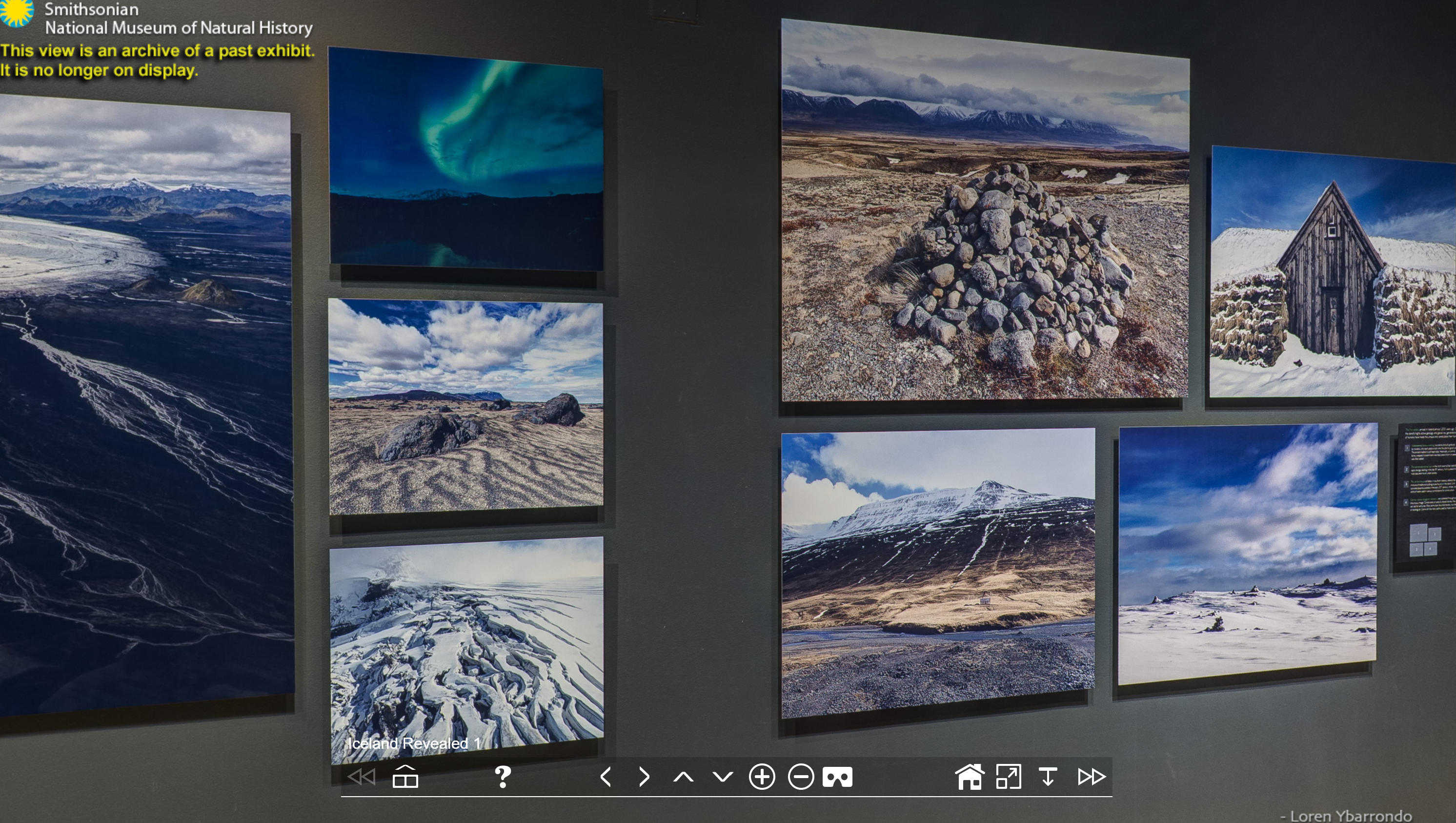
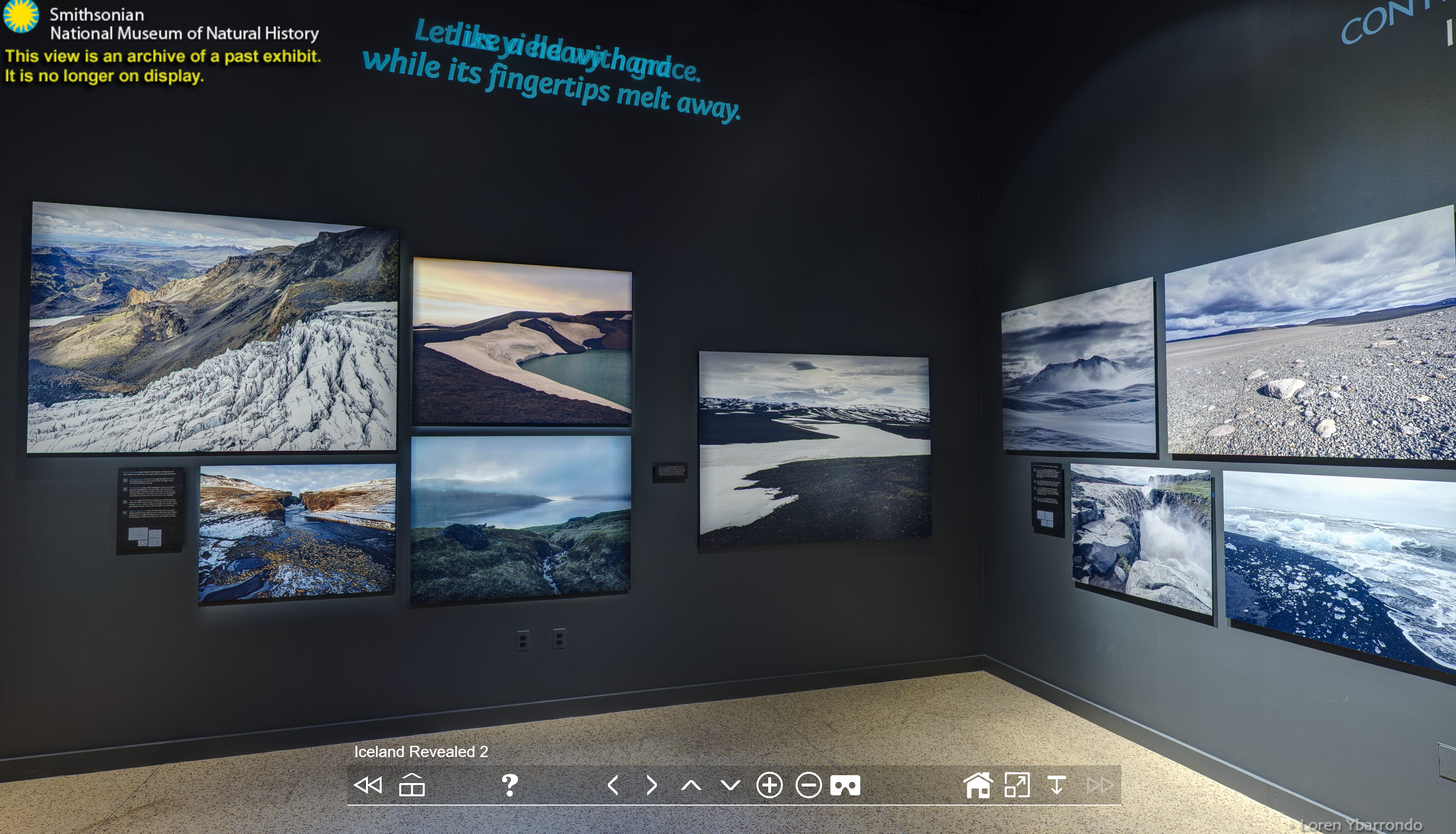
I zoomed in on the Northern Lights because they are something I want to see if I ever get the chance to visit Iceland. Iceland is known for its volcanos and glaciers there are also many places to sight see! I am glad this virtual tour of the Smithsonian National Museum of Natural History gave me the opportunity to see some images captured of Iceland
If you would like to take a virtual Tour of the Smithsonian National Museum of Natural History click HERE.
Thanks for viewing! Follow me on Twitter:// smirnah1
Stockton University is offering a Faculty-Led Study Abroad Program that encourages students to take a GIS course “Quilts” so they can visit Iceland during Spring Break in March of 2022.
Just for reference here is the flyer,
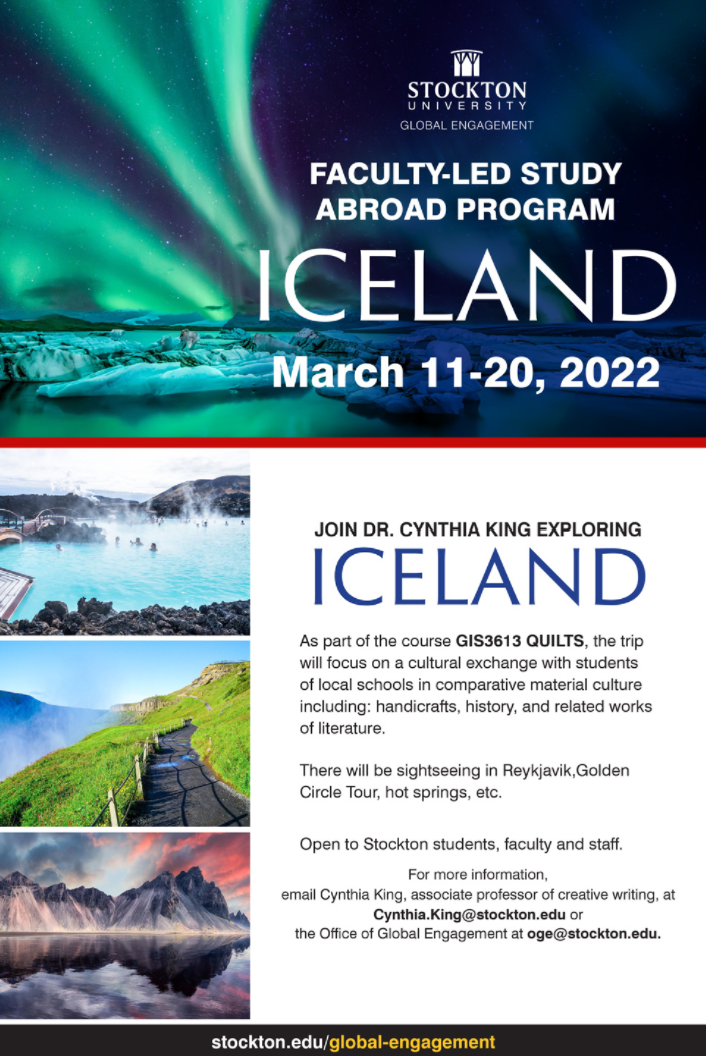
“La Niña” show on Netflix
I watched “La Niña” which is a Colombian, Spanish speaking tv show. It is about the life of a former guerrilla fighter. In the beginning of the first episode “Belky Bustamente” gets caught committing a crime and is sent to a human resources specialist. They suspect she is a minor and they later find out she is only 15 years old. She then is forced to join a social reintegration program. In the same episode we learn that she was taken as a child to go on and fight in the guerilla warfare.
Watch the trailer here:
Belky Bustamente alias “Sara” as a guerilla fighter.
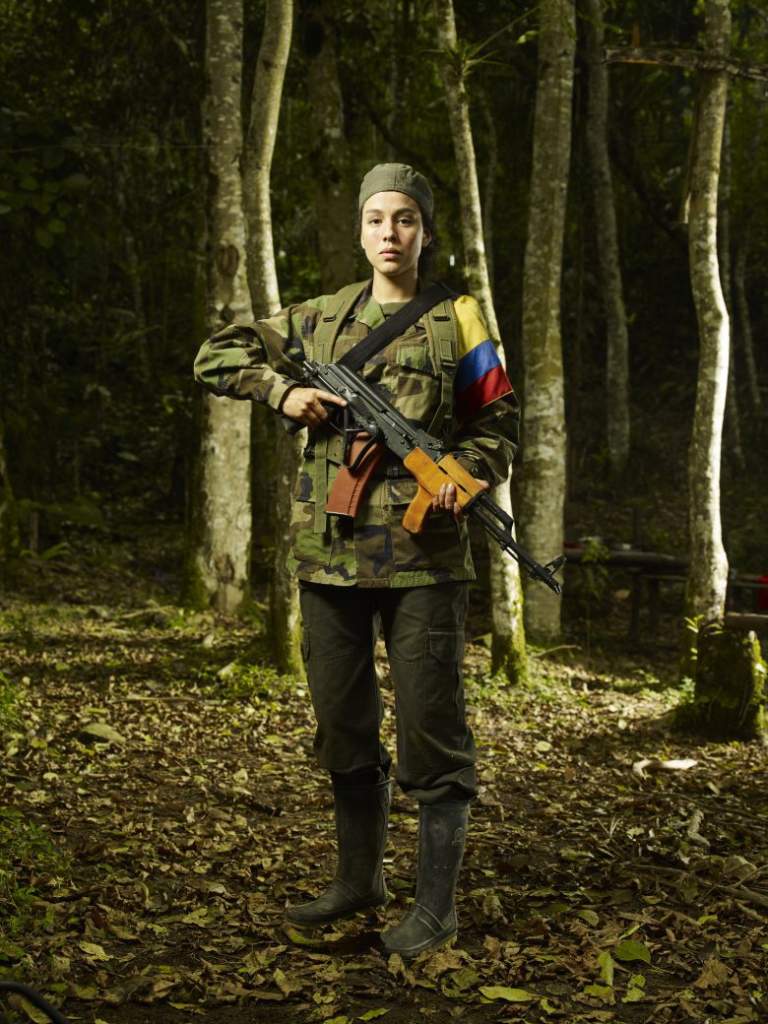
The show is based in Bogota, Columbia (the poor suburban part of the city). There are many street vendors on the streets selling fresh vegetables, meats and foods. The actors speak a different Spanish but it is still understandable to the Spanish that I am familiar with. People of the poor class wear regular clothes and the middle and wealthier (rich) class wear nicer business like attire.
The first few episodes are about her life inside the social reintegration facility. It is not a fancy looking facility (there is a lot of graffiti) but they are offered everything they need as people who are socially reintegrating themselves into society. The economic situation outside of the facility is not the best because many people depend on their street vending businesses, growing their crops, etc.
Politically, the guerilla warfare militia rebelled against the Columbian military because benefits were often only given to those that had higher incomes the government didn’t help out the poor as much as they would to people that were already wealthy.
The similarities I found was that they value family. Here in the U.S for the holidays we gather with our families and have a big dinner and chat about life. The big difference I saw was the amount of street vendors selling foods to make an income. Here in the States not just anyone can sell food on the street, they all need to have a permit to sell food. Travel wise the actors would ride in motorcycles, bikes, vans, busses. The weather was often sunny and warm.
Later on, Belky realizes she has a passion for helping out others and falls in love with the medical field. She then joins a school of medicine to become a nurse.
Lastly, I highly recommend you all watch this show on Netflix (it offers subtitles in English) because it is based on a true story. It definitely expands your knowledge on guerilla warfare in Columbia and how many children are taken out of their will to go and commit crimes.
The cultural and culinary experience of Netflix’s “The Cook of Castamar”
![[Image description: The Palacio del Infante don Luis, the filming location for the fictional Castmar estate on Netflix's "The Cook of Castamar".] Via Wikimedia Commons.](https://blogs.stockton.edu/webtools/files/2021/10/Palacio_del_Infante_don_Luis_Boadilla_del_Monte_01a.jpg)
The Cook of Castamar came to Netflix on July 24, 2021, but it had originally aired on Spain’s Atresmedia player early this year in February (as La Cocinera de Castamar). The show is set in 1720 Madrid and follows Clara Bellmonte, played by Spanish actress Michelle Jenner, after she starts working as a cook in the kitchen of Castamar, the estate of recently widowed Duke Diego Castamar. Clara has agoraphobia, making it impossible for her to go outside. The story centers around Clara and Diego’s love story, a relationship that is forbidden by the social expectations that prohibit aristocracy from marrying the help while still being accepted in polite society.
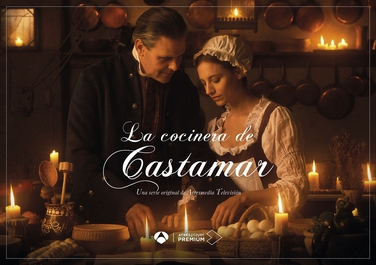
Diego’s estate is filled with toxic, manipulative people who want to use his wife’s recent death for their own gain. While Diego represents the highest crust of aristocracy, he is truly a kind, loving man who did not see how those around him were hurting him and his potential relationship with Clara (until the end, of course).
The culture of 18th-century European aristocracy is not exclusive to Spain, but it is still a society that is different from the one we live in now. However, Spain’s culture during this time was distinctive at this time, because it was immediately after Spain’s Golden Age. The food is what makes the cultural differences stand out, particularly with Spanish cuisine (the kind of food you wouldn’t see when watching another drama about European aristocracies, like The Tudors or Pride and Prejudice). We see Clara making chorizo with another maid, or serving sopapillas for breakfast.
Despite how foreign it seems for society to judge the relationship between a maid and her boss, social stigmas still exist in the 21st century that prevents many from giving in to their feelings (like Clara and Diego for the near entirety of the show). For example, there still seems to be a stigma surrounding couples with large age gaps, no matter the gender. As outdated as it sounds, there are even cases where interracial couples still face stigma. This is perhaps one of the main reasons why Clara and Diego’s story is so compelling; everyone loves a forbidden love story, especially because we all know what it’s like to yearn for something we can’t have.
Another major similarity the show has to my own culture is the value placed on the kitchen. The kitchen is the heart of the home, and this is something Diego recognizes even though it is where the servants mainly build their relationships (he constantly finds himself below in the kitchen to see Clara). When Clara first arrives at Castamar, the housekeeper, Mercedes Berenguer, is hostile toward her and narrows in on any rumor about Clara and Diego’s relationship. What drives her character is the social cue of needing to ensure that all of society knows that she runs a good household and keeps the servants in check (social stature is a major part of this world, economically and socially, while in the 21st-century people can rise up from how they were born). By the end, however, Mercedes and Clara grow to become friends (as she becomes friends with everyone in the kitchen), and all of this happens through the bonds that form over sharing a meal at a table. This is universal, no matter the time period, location, or culture.
The characters also do the same things for fun that we do today. That includes dancing and drinking, cooking for fun, and enjoying a meal together. The types of dances and food that they eat are the only things that are different from my own culture here in the States, but the characters’ values and actions are distinctly relatable because they are simply human.
The cultural differences, on the other hand, also come with the setting and filming locations are also distinctly Spanish. The exterior shots of Castamar were shot at the Palacio del Infante don Luis, a major national cultural site outside of Madrid. In the scenes that are filmed outdoors, especially during tense scenes with horses and sword fighting (without giving away too many spoilers), the landscape is ruggedly European. Jagged hills and rocks, dense forests of the north of Spain, and dry, open plains that are brown with winter (and look like they’d be sweltering in the summer) simply look different from the kinds of plains and forests you see in America.
Another main difference from the show’s society versus that of today’s is the use of public execution as corporal punishment. Clara’s father being executed through hanging is something that you would not see in modern society. In fact, the last public execution in America was in 1936, and in Spain, it was as recently as 1972. The point of this, however, is that they don’t happen in the 21st century.
A final thing that stands out as a cultural difference is politics. At the time, Felipe V ruled Spain and is also a character in the show. Felipe V was notoriously insane and takes away Diego’s dukedom for marrying Clara in the end. This involves the politics surrounding relationships that were not society-approved in 18th century Spain.
Today, politics do not play that big of a role in frowned-upon relationships. It’s mostly social consequences, and the lingering effects that have on a love affair are something that The Cook of Castamar gets right.
Microsoft Translator breaks language barriers and accessibility problems
![Learning setting. [Image description: A collaborative learning setting.] Photo courtesy of Unsplash.](https://blogs.stockton.edu/webtools/files/2021/10/photo-1592303637753-ce1e6b8a0ffb.jpeg)
As someone who is on their way to becoming fluent in a second language for the first time in their life, learning about the benefits of Microsoft Translator in this week’s chapter immediately stood out to me. And that is just for one person; the benefits of Translator reach schools, workplaces, and individual relationships alike (both abroad and on our screens).
For a school like Chinook Middle School in Clyde Hill, Washington, where students speak 32 different languages, Translator is a necessary tool. Principal Russel White, who liked to meet with parents four times a year, always had to use interpreters at language-designated tables. But that all changed when the tables grew in numbers and not every language was represented because of a lack of resources. Luckily, when he teamed up with the school’s IT department and started to use Microsoft Translator, he no longer had to rely on interpreters and constantly worry about not having all the resources to provide the right subtitles to every foreign tongue there.
The app’s website explains how it “provides free resources, tools, and how-to guides for live captioning and translation in the classroom.”
This takes global collaboration to a whole new level. Once the language barrier is broken, the possibilities for global communication, collaboration, and education are endless.
Translator bridges the language barrier with advanced technology that helps students see a transcript in their language on the screen at the front of the classroom, or on their devices. The app also allows what the lecturer is saying to be translated so they can listen to it audibly.
This is useful for foreign exchange students, or for teachers conducting virtual lessons to students on the other side of the globe, or simply for teachers and parents who speak another language to communicate effectively.
And the benefits don’t end there. The app is also useful for learners who need special accessibility tools, such as students who are hard of hearing or deaf. With the combination of translation and accessibility tools, Translator increases inclusivity and accessibility in the classroom. This is extremely important, as hearing difficulties are common throughout the world, and make accessibility tools in any learning environment crucial to the success of the student.
Education, and the way tools and empathy for the hearing-impaired come into play, is a major part of the mission of the National Association of the Deaf. This just shows how important a high-tech app like Translator is, in the way that it can help people with learning disabilities as well as foreign students coming to exchange cultures.
It’s one of the greatest bridges to cultural awareness, and one of the most fascinating tools I have come across this semester when learning about the different tools teachers with “teacherpreneurship” traits can utilize.
Recent Comments